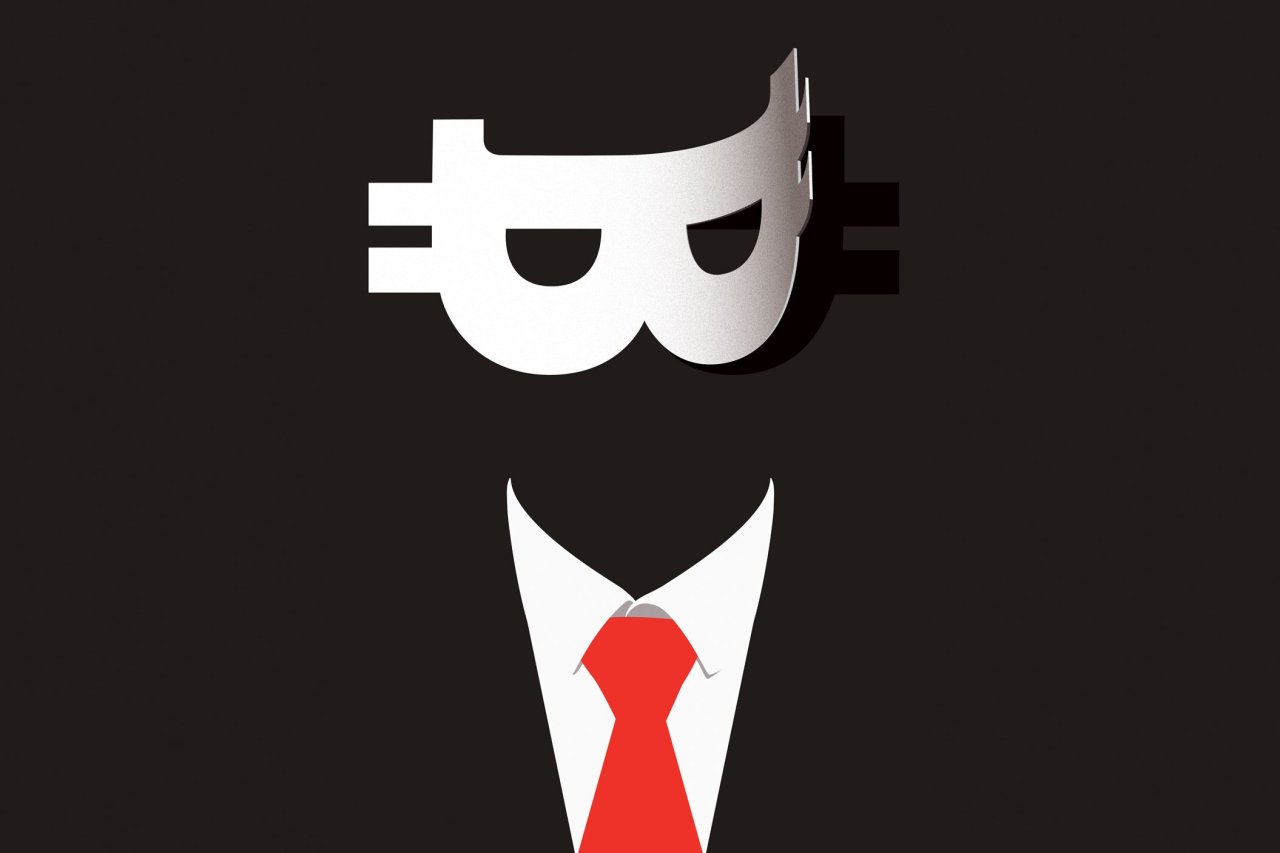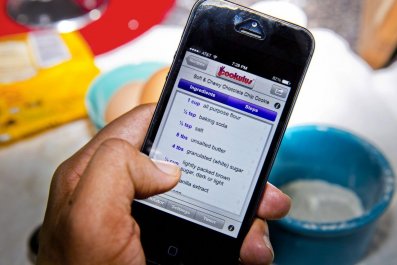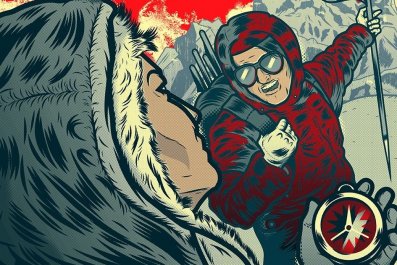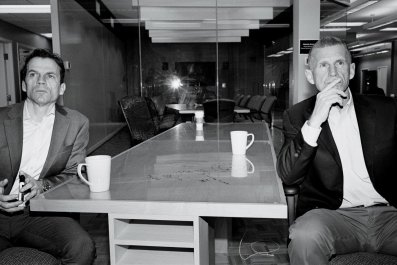This story has been appended to include a statement from Dorian Nakamoto received on March 19th when Newsweek was first contacted directly by Mr. Nakamoto's attorney, denying his role in Bitcoin.
Satoshi Nakamoto stands at the end of his sunbaked driveway looking timorous. And annoyed.
He's wearing a rumpled T-shirt, old blue jeans and white gym socks, without shoes, like he has left the house in a hurry. His hair is unkempt, and he has the thousand-mile stare of someone who has gone weeks without sleep.
He stands not with defiance, but with the slackness of a person who has waged battle for a long time and now faces a grave loss.
Two police officers from the Temple City, Calif., sheriff's department flank him, looking puzzled. "So, what is it you want to ask this man about?" one of them asks me. "He thinks if he talks to you he's going to get into trouble."
"I don't think he's in any trouble," I say. "I would like to ask him about Bitcoin. This man is Satoshi Nakamoto."
"What?" The police officer balks. "This is the guy who created Bitcoin? It looks like he's living a pretty humble life."
I'd come here to try to find out more about Nakamoto and his humble life. It seemed ludicrous that the man credited with inventing Bitcoin - the world's most wildly successful digital currency, with transactions of nearly $500 million a day at its peak - would retreat to Los Angeles's San Gabriel foothills, hole up in the family home and leave his estimated $400 million of Bitcoin riches untouched. It seemed similarly implausible that Nakamoto's first response to my knocking at his door would be to call the cops. Now face to face, with two police officers as witnesses, Nakamoto's responses to my questions about Bitcoin were careful but revealing.
Tacitly acknowledging his role in the Bitcoin project, he looks down, staring at the pavement and categorically refuses to answer questions.
"I am no longer involved in that and I cannot discuss it," he says, dismissing all further queries with a swat of his left hand. "It's been turned over to other people. They are in charge of it now. I no longer have any connection."
Nakamoto refused to say any more, and the police made it clear our conversation was over.
But a two-month investigation and interviews with those closest to Nakamoto and the developers who worked most frequently with him on the out-of-nowhere global phenomenon that is Bitcoin reveal the myths surrounding the world's most famous crypto-currency are largely just that - myths - and the facts are much stranger than the well-established fiction.
Far from leading to a Tokyo-based whiz kid using the name "Satoshi Nakamoto" as a cipher or pseudonym (a story repeated by everyone from Bitcoin's rabid fans to The New Yorker), the trail followed by Newsweek led to a 64-year-old Japanese-American man whose name really is Satoshi Nakamoto. He is someone with a penchant for collecting model trains and a career shrouded in secrecy, having done classified work for major corporations and the U.S. military.
Standing before me, eyes downcast, appeared to be the father of Bitcoin.
Not even his family knew.
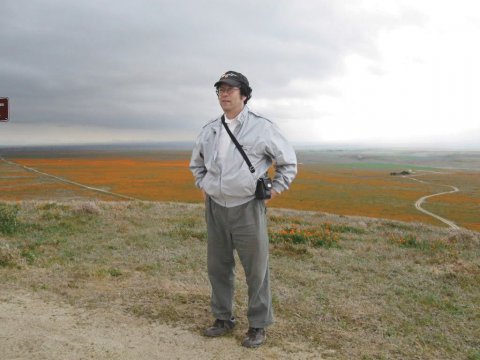
There are several Satoshi Nakamotos living in North America and beyond - both dead and alive - including a Ralph Lauren menswear designer in New York and another who died in Honolulu in 2008, according to the Social Security Index's Death Master File. There's even one on LinkedIn who claims to have started Bitcoin and is based in Japan. But none of these profiles seem to fit other known details and few of the leads proved credible. Of course, there is also the chance "Satoshi Nakamoto" is a pseudonym, but that raises the question why someone who wishes to remain anonymous would choose such a distinctive name. It was only while scouring a database that contained the registration cards of naturalized U.S. citizens that a Satoshi Nakamoto turned up whose profile and background offered a potential match. But it was not until after ordering his records from the National Archives and conducting many more interviews that a cohesive picture began to take shape.
Two weeks before our meeting in Temple City, I struck up an email correspondence with Satoshi Nakamoto, mostly discussing his interest in upgrading and modifying model steam trains with computer-aided design technologies. I obtained Nakamoto's email through a company he buys model trains from.
He has been buying train parts from Japan and England since he was a teenager, saying, "I do machining myself, manual lathe, mill, surface grinders."
The process also requires a good amount of math, something at which Nakamoto - and his entire family - excels. The eldest of three brothers who all work in engineering and technical fields, Nakamoto graduated from California State Polytechnic University in Pomona, Calif., with a degree in physics. But unlike his brothers, his circuitous career path is very hard to trace.
Nakamoto ceased responding to emails I'd sent him immediately after I began asking about Bitcoin. This was in late February. Before that, I'd also asked about his professional background, for which there is very little to be found in the public record. I only received evasive answers. When he asked about my background, I told him I'd be happy to elaborate over the phone and called him to introduce myself. When there was no response, I asked his oldest son, Eric Nakamoto, 31, to reach out and see whether his father would talk about Bitcoin. The message came back he would not. Attempts through other family members also failed.
After that, Nakamoto disregarded my requests to speak by phone and did not return calls. The day I arrived at his modest, single-family home in southern California, his silver Toyota Corolla CE was parked in the driveway but he didn't answer the door.
At one point he did peer out, cracking open the door screen and making eye contact briefly. Then he shut it. That was the only time I saw him without police officers in attendance.
"You want to know about my amazing physicist brother?" says Arthur Nakamoto, Satoshi Nakamoto's youngest sibling, who works as director of quality assurance at Wavestream Corp., a maker of radio frequency amplifiers in San Dimas, Calif.
"He's a brilliant man. I'm just a humble engineer. He's very focused and eclectic in his way of thinking. Smart, intelligent, mathematics, engineering, computers. You name it, he can do it."
But he also had a warning.
"My brother is an asshole. What you don't know about him is that he's worked on classified stuff. His life was a complete blank for a while. You're not going to be able to get to him. He'll deny everything. He'll never admit to starting Bitcoin."
And with that, Nakamoto's brother hung up.
His remarks suggested I was on the right track, but that was not enough. While his brother suggested Nakamoto would be capable of starting Bitcoin, I was not at all sure whether he knew for certain one way or the other. He said they didn't get along and didn't speak often.
I plainly needed to talk to Satoshi Nakamoto face to face.
Bitcoin is a currency that lives in the world of computer code and can be sent anywhere in the world without racking up bank or exchange fees, and is then stored on a cellphone or hard drive until used again. Because the currency resides in code, it can also be lost when a hard drive crashes, or stolen if someone else accesses the keys to the code.
"The whole reason geeks get excited about Bitcoin is that it is the most efficient way to do financial transactions," says Bitcoin's chief scientist, Gavin Andresen, 47. He acknowledges that Bitcoin's ease of use can also lead to easy theft and that it is safest when stored in a safe-deposit box or on a hard drive that's not connected to the Internet. "For anyone who's tried to wire money overseas, you can see how much easier an international Bitcoin transaction is. It's just as easy as sending an email."
Even so, Bitcoin is vulnerable to massive theft, fraud and scandal, which has seen the price of Bitcoins whipsaw from more than $1,200 each last year to as little as $130 in late February.
The currency has attracted the attention of the U.S. Senate, the Department of Homeland Security, the Federal Reserve, the Internal Revenue Service, the Treasury Department's Financial Crimes Enforcement Network, the Securities and Exchange Commission and the Federal Bureau of Investigation, which in October shuttered the online black market Silk Road and seized its $3.5 million cache of Bitcoin. "The FBI is now one of the largest holders of Bitcoin in the world," Andresen says.
In recent weeks, a revived version of Silk Road as well as one of Bitcoin's biggest exchanges, Tokyo-based Mt. Gox, shut down and filed for bankruptcy after attacks by hackers drained each of millions of dollars.
Andresen, a Silicon Valley refugee in Amherst, Mass., says he worked closely with the person "or entity" known as Satoshi Nakamoto on the development of Bitcoin from June 2010 to April 2011. This was before the rise of today's multibillion-dollar Bitcoin economy, boosted last year by the unexpected, if cautious, endorsement of outgoing Federal Reserve chair Ben Bernanke, who said virtual currencies "may hold long-term promise."
Since then, Bitcoin ATMs have been cropping up across North America (with some of the first in Vancouver, British Columbia; Boston; and Albuquerque, N.M.) while the acceptance of Bitcoin has spread to businesses as diverse as Tesla, OkCupid, Reddit, Overstock.com and Virgin Galactic, Richard Branson's aviation company, which has said it will blast people into space if they cough up enough Bitcoin.
"Working on Bitcoin's core code is really scary, actually, because if you wreck something, you can break this huge $8 billion project," says Andresen. "And that's happened. We have broken it in the past."
For nearly a year, Andresen corresponded with the founder of Bitcoin a few times a week, often putting in 40-hour weeks refining the Bitcoin code. Throughout their correspondence, Nakamoto's evasiveness was his hallmark, Andresen says.
In fact, he never even heard Nakamoto's voice, because the founder of Bitcoin would not communicate by phone. Their interactions, he says, always took place by "email or private message on the Bitcointalk forum," where enthusiasts meet online.
"He was the kind of person who, if you made an honest mistake, he might call you an idiot and never speak to you again," Andresen says. "Back then, it was not clear that creating Bitcoin might be a legal thing to do. He went to great lengths to protect his anonymity."
Nakamoto also ignored all of Andresen's questions about where he was from, his professional background, what other projects he'd worked on and whether his name was real or a pseudonym (many of Bitcoin's devotees use pseudonyms). "He was never chatty," Andresen says. "All we talked about was code."
Andresen, an Australian who graduated from Princeton with a Bachelor's in computer science, eventually became Nakamoto's point person on a growing team of international coders and programmers who worked on a volunteer basis to perfect the Bitcoin code after its inauspicious launch in January 2009.
Andresen originally heard about Bitcoin the following year through a blog he followed. He reached out to Nakamoto through one of the Bitcoin founder's untraceable email addresses and offered his assistance. His initial message to Bitcoin's inventor read: "Bitcoin is a brilliant idea, and I want to help. What do you need?"
Andresen says he didn't give much thought to working for an anonymous inventor. "I am a geek," he says simply. "I don't care if the idea came from a good person or an evil person. Ideas stand on their own."
Other developers were driven by "enlightened self-interest," profit or personal politics, he says. But nearly all were intrigued by the promise of a digital currency accessible to anyone in the world that could bypass central banks at a time when the global financial system was on life support. In this respect, the launch of Bitcoin could not have been better timed.
In 2008, just before Bitcoin's official kickoff, a somewhat stiffly written, nine-page proposal found its way onto the Internet bearing the name and email address of Satoshi Nakamoto.
The paper proposed "electronic cash" that "would allow online payments to be sent directly from one party to another without going through a financial institution," with transactions time-stamped and viewable to all.
The masterstroke was replacing the role of banks as the trusted middlemen with Bitcoin users, who would act as sentinels for the integrity of the system, verifying transactions using their computing power in exchange for Bitcoin.
Bitcoin production is designed to move at a carefully calibrated pace to boost value and scarcity and remain inflation proof, halving its quantity every four years, and is designed to stop proliferating when Bitcoins reach a total of 21 million in 2140. (Bitcoins can be divided by up to eight decimal places, with the smallest units called "satoshis.")
"I got the impression that Satoshi was really doing it for political reasons," says Andresen, who gets paid in Bitcoins - along with a half-dozen other Bitcoin core developers working everywhere from Silicon Valley to Switzerland - by the Bitcoin Foundation, a nonprofit working to standardize the currency.
He doesn't like the system we have today and wanted a different one that would be more equal. He did not like the notion of banks and bankers getting wealthy just because they hold the keys," says Andresen.
Holding the keys has also made early comers to Bitcoin wealthy beyond measure. "I made a small investment in Bitcoin and it is actually enough that I could now retire if I wanted to," Andresen says. "Overall, I've made about $800 per penny I've invested. It's insane."
One of the first people to start working with Bitcoin's founder in 2009 was Martti Malmi, 25, a Helsinki programmer who invested in Bitcoins. "I sold them in 2011 and bought a nice apartment," he says. "Today, I could have bought 100 nice apartments."
Communication with Bitcoin's founder was becoming less frequent by early 2011. Nakamoto stopped posting changes to the Bitcoin code and ignored conversations on the Bitcoin forum.
Andresen was unprepared, however, for Satoshi Nakamoto's reaction to an email exchange between them on April 26, 2011.
"I wish you wouldn't keep talking about me as a mysterious shadowy figure," Nakamoto wrote to Andresen. "The press just turns that into a pirate currency angle. Maybe instead make it about the open source project and give more credit to your dev contributors; it helps motivate them."
Andresen responded: "Yeah, I'm not happy with the 'wacky pirate money' tone, either."
Then he told Nakamoto he'd accepted an invitation to speak at the Central Intelligence Agency headquarters. "I hope that by talking directly to them and, more importantly, listening to their questions/concerns, they will think of Bitcoin the way I do - as a just-plain-better, more efficient, less-subject-to-political-whims money," he said. "Not as an all-powerful black-market tool that will be used by anarchists to overthrow the System."
From that moment, Satoshi Nakamoto stopped responding to emails and dropped off the map.

Nakamoto's family describe him as extremely intelligent, moody and obsessively private, a man of few words who screens his phone calls, anonymizes his emails and, for most of his life, has been preoccupied with the two things for which Bitcoin has now become known: money and secrecy.
For the past 40 years, Satoshi Nakamoto has not used his birth name in his daily life. At the age of 23, after graduating from California State Polytechnic University, he changed his name to "Dorian Prentice Satoshi Nakamoto," according to records filed with the U.S. District Court of Los Angeles in 1973. Since then, he has not used the name Satoshi but instead signs his name "Dorian S. Nakamoto."
Descended from Samurai and the son of a Buddhist priest, Nakamoto was born in July 1949 in the city of Beppu, Japan, where he was brought up poor in the Buddhist tradition by his mother, Akiko. In 1959, after a divorce and remarriage, she immigrated to California, taking her three sons with her. Now age 93, she lives with Nakamoto in Temple City.
Nakamoto did not get along with his stepfather, but his aptitude for math and science was evident from an early age, says Arthur, who also notes, "He is fickle and has very weird hobbies."
Just after graduating college, Nakamoto went to work on defense and electronics communications for Hughes Aircraft in southern California. "That was just the beginning," says Arthur, who also worked at Hughes. "He is the only person I have ever known to show up for a job interview and tell the interviewer he's an idiot - and then prove it."
Nakamoto has six children. The first, a son from his first marriage in the 1980's, is Eric Nakamoto, an animation and 3-D graphics designer in Philadelphia. His next five children were with his second wife, Grace Mitchell, 56, who lives in Audubon, N.J., and says she met Nakamoto at a Unitarian church mixer in Cherry Hill, N.J., in the mid-1980s. She recalls he came to the East Coast after leaving Hughes Aircraft, now part of Raytheon, in his 20s and next worked for Radio Corporation of America in Camden, N.J., as a systems engineer.
"We were doing defensive electronics and communications for the military, government aircraft and warships, but it was classified and I can't really talk about it," confirms David Micha, president of the company now called L-3 Communications.
Mitchell says her husband "did not talk much about his work" and sometimes took on military projects independent of RCA. In 1987, the couple moved back to California, where Nakamoto worked as a computer engineer for communications and technologies companies in the Los Angeles area, including financial information service Quotron Systems Inc., sold in 1994 to Reuters, and Nortel Networks.
Nakamoto, who was laid off twice in the 1990s, according to Mitchell, fell behind on mortgage payments and taxes and their home was foreclosed. That experience, says Nakamoto's oldest daughter, Ilene Mitchell, 26, may have informed her father's attitude toward banks and the government.
A libertarian, Nakamoto encouraged his daughter to be independent, start her own business and "not be under the government's thumb," she says. "He was very wary of the government, taxes and people in charge."
She also describes her father as a man who worked all hours, from before the family rose in the morning to late into the night. "He would keep his office locked and we would get into trouble if we touched his computer," she recalls. "He was always expounding on politics and current events. He loved new and old technology. He built his own computers and was very proud of them."
Around 2000, Nakamoto and Grace separated, though they have never divorced. They moved back to New Jersey with their five children and Nakamoto worked as a software engineer for the Federal Aviation Administration in New Jersey in the wake of the September 11 attacks, doing security and communications work, says Mitchell.
"It was very secret," she says. "He left that job sometime in 2001 and I don't think he's had a steady job since."
When the FAA contract ended, Nakamoto moved back to Temple City, where for the rest of that decade things get hazy about what kind of work he undertook.
Ever since Bitcoin rose to prominence there has been a hunt for the real Satoshi Nakamoto. Did he act alone or was he working for the government? Bitcoin has been linked to everything from the National Security Agency to the International Monetary Fund.
Yet, in a world where almost every big Silicon Valley innovation seems to erupt in lawsuits over who thought of it first, in the case of Bitcoin the founder has remained conspicuously silent for the past five years.
"I could see my dad doing something brilliant and not accepting the greater effect of it," says Ilene Mitchell, who works for Partnerships for Student Achievement in Beaverton, Ore. "But I honestly don't see him being straight about it. Any normal person would be all over it. But he's not totally a normal person."
Nakamoto's middle brother, Tokuo Nakamoto, who lives near his brother and mother, in Duarte, Calif., agrees. "He is very meticulous in what he does, but he is very afraid to take himself out into the media, so you will have to excuse him," he says.
Characteristics of Satoshi Nakamoto, the Bitcoin founder, that dovetail with Dorian S. Nakamoto, the computer engineer, are numerous. Those working most closely with Bitcoin's founder noticed several things: he seemed to be older than the other Bitcoin developers. And he worked alone.
"He didn't seem like a young person and he seemed to be influenced by a lot of people in Silicon Valley," says Nakamoto's Finnish protégé, Martti Malmi. Andresen concurs: "Satoshi's style of writing code was old-school. He used things like reverse Polish notation."
In addition, the code was not always terribly neat, another sign that Nakamoto was not working with a team that would have cleaned up the code and streamlined it.
"Everyone who looked at his code has pretty much concluded it was a single person," says Andresen. "We have rewritten roughly 70 percent of the code since inception. It wasn't written with nice interfaces. It was like one big hairball. It was incredibly tight and well-written at the lower level but where functions came together it could be pretty messy."
Satoshi Nakamoto's 2008 online proposal also hints at his age, with the odd reference to "disk space" - something that hasn't been an issue since the last millennium - and older research citations of contemporaries' work going back to 1957.
The Bitcoin code is based on a network protocol that's been established for decades. Its brilliance is not so much in the code itself, says Andresen, but in the design, which unites functions to reach multiple ends. The punctuation in the proposal is also consistent with how Dorian S. Nakamoto writes, with double spaces after periods and other format quirks.
In the debate between those who claim Nakamoto writes curiously "flawless English" for a Japanese man and those who contend otherwise, writing under both names can swerve wildly between uppercase and lowercase, full spellings and abbreviations, proper English and slang.
In his correspondences and writings, it has widely been noted that Satoshi Nakamoto alternates between British and American spellings - and, depending on his audience, veers between highly abbreviated verbiage and a more formal, polished style. Grace Mitchell says her husband does the same.
Dorian S. Nakamoto's use of English, she says, was likely influenced by his lifelong interest in collecting model trains, many of which he imported from England as a teenager while he was still learning English.
Mitchell suspects Nakamoto's initial interest in creating a digital currency that could be used anywhere in the world may have stemmed from his frustration with bank fees and high exchange rates when he was sending international wires to England to buy model trains. "He would always complain about that," she says. "I would not say he writes flawless English. He will pick up words and mix the spellings."
Eric, Nakamoto's oldest son from his first marriage, says he remains torn over whether his father is the founder of Bitcoin, noting that messages from the latter appear more "concise" and "refined than that of my father's."
Perhaps the most compelling parallel between the two Nakamotos are their professional skill sets and career timeframes. Andresen says Satoshi Nakamoto told him about how long it took him to develop Bitcoin - a span that falls squarely into Dorian S. Nakamoto's job lapse starting in 2001. "Satoshi said he'd been working on Bitcoin for years before he launched it," Andresen says. "I could see the original code taking at least two years to write. He had a revelation that he had solved something no one had solved before."
Satoshi Nakamoto's three-year silence also dovetails with health issues suffered by Dorian S. Nakamoto in the past few years, his family says. "It has been hard, because he suffered a stroke several months ago and before that he was dealing with prostate cancer," says his wife, who works as a critical-care nurse in New Jersey. "He hasn't seen his kids for the past few years."
She has been unable to get Nakamoto to speak with her about whether he was the founder of Bitcoin. Eric Nakamoto says his father has denied it. Tokuo and Arthur Nakamoto believe their brother will leave the truth unconfirmed.
"Dorian can just be paranoid," says Tokuo. "I cannot get through to him. I don't think he will answer any of these questions to his family truthfully."
Of course, none of this puts to rest the biggest question of all - the one that only Satoshi Nakamoto himself can answer: What has kept him from spending his hundreds of millions of dollars of Bitcoin, which he reaped when he launched the currency years ago? According to his family both he - and they - could really use the money.
Andresen says if Nakamoto is as concerned about maintaining his anonymity as he remembers the answer might be simple: He does not want to participate in the Bitcoin madness. "If you come out as the leader of Bitcoin, now you have to make appearances and presentations and comments to the press and that didn't really fit with Satoshi's personality," he says. "He didn't really want to lead it anymore. He was pretty intolerant to incompetence. And he also realized the project would go on without him."
On the other hand, it is possible Nakamoto simply lost the private security keys to unlock his Bitcoin and cash in on his riches. Andresen, however, says he doubts it. "He was too disciplined," he says.
If Nakamoto ever sells his Bitcoin fortune, he would likely have to do so at a legitimate Bitcoin bank or exchange, which would not only give away his identity but alert everyone from the IRS to the FBI of his movements. While Bitcoin lets its users conduct transactions anonymously, all transactions can be viewed transparently online - and everyone is watching Nakamoto's Bitcoin to see if he spends it, says Andresen.
For his part, Andresen says he is inclined to respect Nakamoto's anonymity. "When programmers get together, we don't talk about who Satoshi Nakamoto is," he says. "We talk about how we should have invested in more Bitcoin. I mean, we're curious about it, but honestly, we really don't care."
Calling the possibility her father could also be the father of Bitcoin "flabbergasting," Ilene Mitchell says she isn't surprised her father would choose to stay under cover if he was the man behind this venture, especially as he is currently concerned about his health.
"He is very wary of government interference in general," she says. "When I was little, there was a game we used to play. He would say, 'Pretend the government agencies are coming after you.' And I would hide in the closet."
Forensic analysts Sharon Sergeant and Barbara Mathews contributed to research for this piece.
Newsweek issued a statement about this article on March 7, 2014
*** Dorian Nakamoto's Statement Recieved on March 19, 2014:
My name is Dorian Satoshi Nakamoto. I am the subject of the Newsweekstory on Bitcoin. I am writing this statement to clear my name.
I did not create, invent or otherwise work on Bitcoin. I unconditionally deny the Newsweek report.
The first time I heard the term "bitcoin" was from my son in mid-February 2014. After being contacted by a reporter, my son called me and used the word,which I had never before heard. Shortly thereafter, the reporter confronted me at my home. I called the police. I never consented to speak with the reporter. In an ensuing discussion with a reporter from the Associated Press, I called the technology "bitcom."
I was still unfamiliar with the term.My background is in engineering. I also have the ability to program. My most recent job was as an electrical engineer troubleshooting air traffic controlequipment for the FAA. I have no knowledge of nor have I ever worked on cryptography, peer to peer systems, or alternative currencies.
I have not been able to find steady work as an engineer or programmer for ten years. I have worked as a laborer, polltaker, and substitute teacher. I discontinued my internet service in 2013 due to severe financial distress. I am trying to recover from prostate surgery in October 2012 and a stroke I suffered in October of 2013. My prospects for gainful employment has been harmed because of Newsweek's article.
Newsweek's false report has been the source of a great deal of confusion and stress for myself, my 93-year old mother, my siblings, and their families. I offer my sincerest thanks to those people in the United States and around the world who have offered me their support. I have retained legal counsel. This will be our last public statement on this matter. I ask that you now respect our privacy.
Dorian Satoshi Nakamoto
Temple City, California
March 17, 2014


